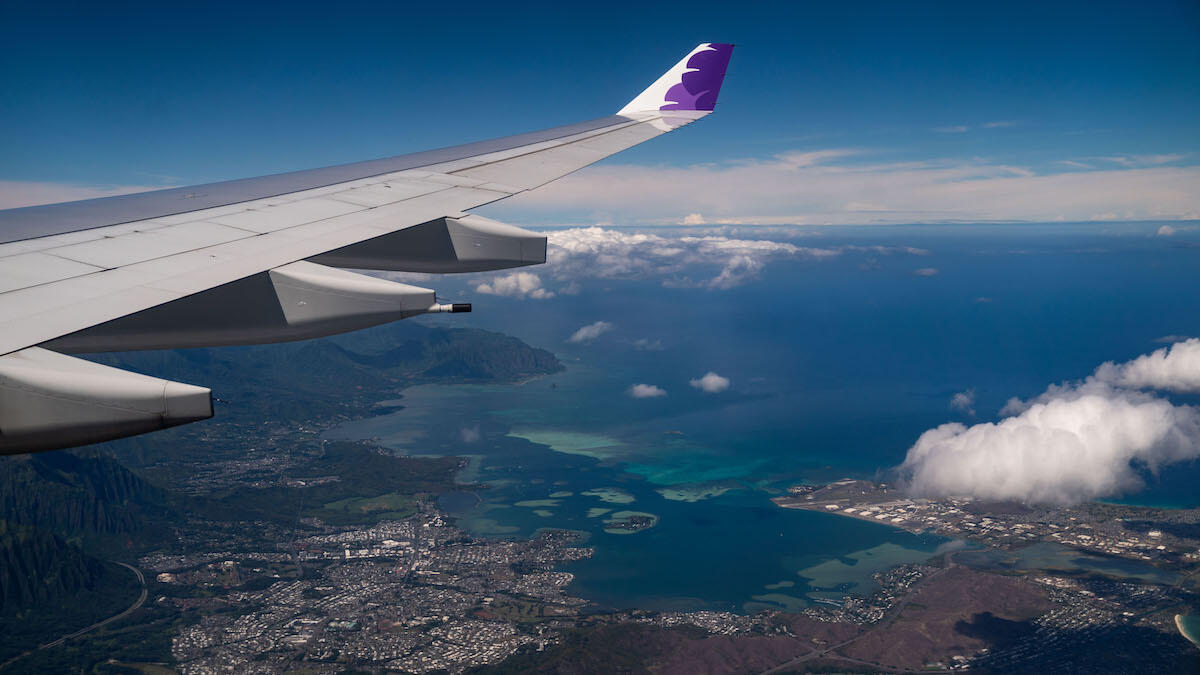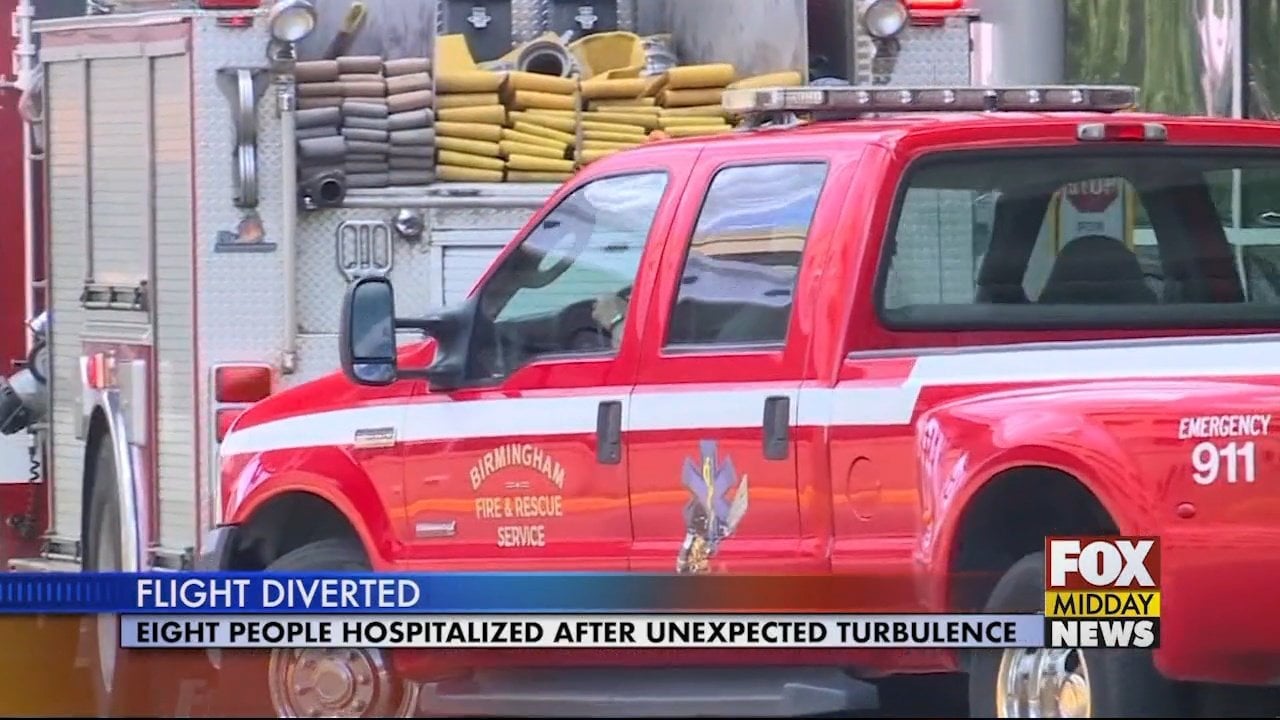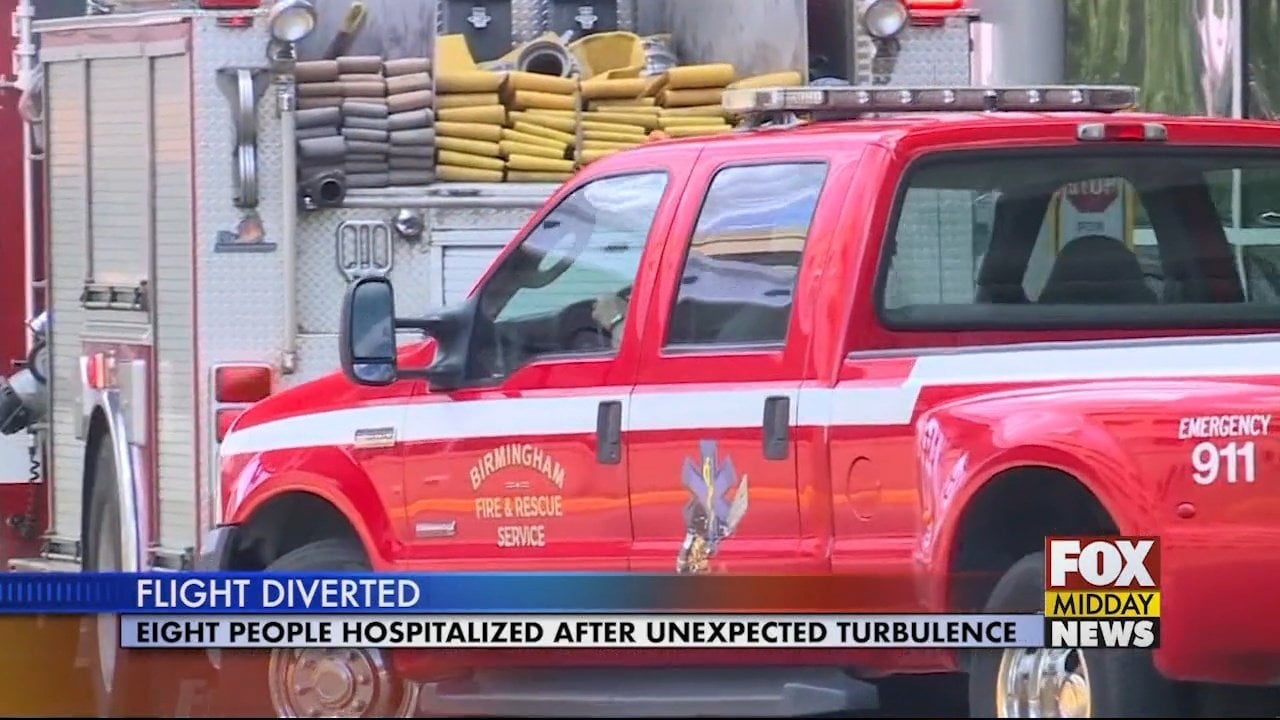Several crew members hospitalized after ‘severe’ turbulence on a flight – it sounds like a scene from a disaster movie, right? But unfortunately, severe in-flight turbulence is a real hazard, capable of causing significant injuries to both passengers and crew. This article explores the causes, consequences, and preventative measures surrounding this often-overlooked aspect of air travel. We’ll delve into the science behind turbulence, examine safety protocols, and discuss the medical implications of these jarring events.
We’ll cover everything from the different types of turbulence and their impact on the human body to the role of aircraft design and weather forecasting in mitigating risk. We’ll also look at how airlines and medical professionals respond to such incidents and what passengers can do to prepare themselves for unexpected bumps in the air. Get ready for a detailed look at a phenomenon that, while relatively rare, highlights the ever-present challenges of safe air travel.
Severity and Impact of Turbulence
Air turbulence, a seemingly unpredictable phenomenon, significantly impacts air travel safety and passenger comfort. Understanding its various levels and potential consequences is crucial for mitigating risks and ensuring a smoother flight experience. This section details the severity and impact of turbulence, covering its physiological effects and common injuries.
So, several crew members ended up in the hospital after that crazy severe turbulence on the flight. It makes you think about the pressure these professionals are under; check out this article about the Indian skipper facing similar intense pressure: ‘Not up for it’: Pressure grows on Indian skipper. It’s a reminder that high-stakes jobs, whether in the air or on the field, can take a serious toll on people’s well-being.
Hopefully, those crew members recover quickly.
Levels of Turbulence and Their Effects
Turbulence is categorized into several levels, from light chop to extreme severe turbulence. Light turbulence causes minor discomfort, while moderate turbulence can make it difficult to move around the cabin. Severe turbulence can cause injuries, and extreme turbulence poses a significant risk of serious injury or even fatalities. The effects on passengers and crew range from mild discomfort and spilled drinks in light turbulence to serious injuries like bruises, broken bones, and head trauma in severe cases.
Crew members, often unrestrained while performing their duties, are particularly vulnerable.
Physiological Effects of Severe Turbulence
The sudden, forceful movements during severe turbulence can exert significant forces on the human body. These forces can cause whiplash injuries to the neck and back, internal organ damage, and concussion. The rapid changes in acceleration and deceleration can also lead to disorientation and nausea. Pregnant women, elderly individuals, and passengers with pre-existing medical conditions are particularly susceptible to these effects.
Common Injuries During Severe Turbulence
Injuries sustained during severe in-flight turbulence range from minor bruises and cuts to severe fractures and internal injuries. Common injuries include whiplash, concussions, broken bones (especially ribs and limbs), lacerations from being thrown against objects, and internal injuries such as organ damage. The severity of the injury depends on the intensity of the turbulence and the passenger’s position and protection at the time of the event.
Comparison of Turbulence Types and Associated Risks
| Type of Turbulence | Description | Potential Effects on Passengers | Risk Level |
|---|---|---|---|
| Light Turbulence | Slight, bumpy ride; minor aircraft movement. | Minor discomfort; slight difficulty walking. | Low |
| Moderate Turbulence | Noticeable aircraft movement; difficulty walking; unsecured objects may move. | Discomfort; difficulty eating or drinking; spills possible. | Medium |
| Severe Turbulence | Sudden, abrupt aircraft movements; difficult to remain seated; unsecured objects thrown about. | Injuries possible; significant discomfort; potential for serious injury. | High |
| Extreme Turbulence | Violent and unpredictable aircraft movements; passengers and crew thrown about; potential for structural damage. | Serious injury or death likely; significant risk of structural damage. | Extreme |
Crew Response and Safety Procedures
The actions of flight crews during severe turbulence are critical in mitigating risks and ensuring passenger safety. This section Artikels standard operating procedures, successful and unsuccessful responses, and a flowchart illustrating crew actions.
Standard Operating Procedures During Severe Turbulence, Several crew members hospitalized after ‘severe’ turbulence on
Upon encountering severe turbulence, flight crews immediately implement established safety procedures. This includes instructing passengers to fasten their seatbelts, securing loose items, and remaining seated with their seatbelts fastened until the turbulence subsides. The crew also prepares for potential injuries and ensures the safety of the aircraft.
Yikes, hearing about those crew members hospitalized after severe turbulence – that sounds rough! It makes you appreciate the stability of things, like, say, a solid defense. Check out this article on The Numbers: Palace’s 150 Premier League clean sheets for a different kind of stability; it’s impressive how many games they’ve managed to keep their net clean.
Anyway, back to the turbulence – hopefully those crew members recover quickly.
Mitigating Risks and Ensuring Passenger Safety
Crew members take several steps to mitigate risks and ensure passenger safety. These include assessing the severity of the turbulence, communicating with air traffic control, and providing reassurance to passengers. First aid is administered to injured passengers, and the crew works to stabilize the aircraft and maintain control.
Examples of Crew Responses to Severe Turbulence
Successful responses involve swift and decisive action by the crew, leading to minimal injuries and a safe landing. Unsuccessful responses, often due to unexpected severity or inadequate preparation, can result in more significant injuries and potentially damage to the aircraft. Detailed post-incident analyses of both scenarios are crucial for continuous improvement in safety procedures.
Flowchart of Crew Actions During and After Severe Turbulence
A flowchart visually represents the sequential steps taken by the crew:
1. Turbulence Encountered: Fasten seatbelts, secure cabin.
2. Assess Severity: Communicate with ATC, prepare for potential injuries.
3.
Passenger Safety: Provide reassurance, administer first aid if needed.
4. Aircraft Control: Maintain control, navigate through turbulence.
5. Post-Turbulence: Assess injuries, make announcements, complete incident report.
6. Landing: Prepare for landing, coordinate with ground crews.
Aircraft Design and Safety Features: Several Crew Members Hospitalized After ‘severe’ Turbulence On
Modern aircraft incorporate numerous design features and safety mechanisms to mitigate the effects of turbulence. This section explores the role of aircraft design and safety features in protecting passengers and crew.
Role of Aircraft Design in Mitigating Turbulence

Aircraft design plays a crucial role in reducing the impact of turbulence. Aerodynamic design, structural strength, and materials used in construction all contribute to the aircraft’s ability to withstand the forces exerted during turbulence. The design also aims to minimize the transmission of these forces to the cabin and passengers.
Safety Features in Modern Aircraft
Modern aircraft are equipped with various safety features designed to enhance passenger and crew safety during turbulence. These include reinforced cabin structures, improved seat designs, and enhanced flight control systems. The design considerations are also aimed at minimizing the effect of turbulence on the aircraft’s stability and handling.
Comparison of Safety Features Across Aircraft Types
Different aircraft types have varying levels of turbulence resistance due to differences in size, design, and construction materials. Larger aircraft generally have a greater ability to withstand severe turbulence compared to smaller aircraft. However, all modern commercial aircraft are designed to meet rigorous safety standards to minimize the risk of structural failure during turbulence.
Technological Advancements for Passenger Safety
- Improved weather forecasting and avoidance systems.
- Advanced flight control systems for enhanced stability.
- Reinforced cabin structures and seat designs for better protection.
- Real-time turbulence detection and warning systems.
- Development of lighter yet stronger composite materials for aircraft construction.
Meteorological Factors and Forecasting
Understanding the atmospheric conditions that lead to severe turbulence is essential for improving forecasting and mitigating its impact. This section explores meteorological factors, forecasting methods, limitations, and potential improvements.
Atmospheric Conditions Contributing to Severe Turbulence
Several atmospheric conditions contribute to severe turbulence, including clear-air turbulence (CAT), jet streams, thunderstorms, and mountain waves. CAT is particularly challenging to predict as it occurs in clear skies with no visible weather phenomena. Jet streams, fast-flowing air currents high in the atmosphere, can create significant turbulence when an aircraft intersects them.
Methods for Forecasting and Predicting Turbulence
Meteorologists use various methods to forecast and predict areas of turbulence, including weather satellites, radar, and sophisticated computer models. These models analyze atmospheric data to identify areas with high potential for turbulence. However, predicting the precise location and intensity of turbulence remains a challenge, especially for CAT.
Limitations of Current Turbulence Forecasting Technologies
Current turbulence forecasting technologies have limitations. Predicting clear-air turbulence remains a significant challenge due to its unpredictable nature. The accuracy of forecasts can vary depending on the complexity of the atmospheric conditions and the limitations of the available data. Improvements in forecasting accuracy are an ongoing area of research and development.
Improving Weather Forecasting to Reduce Severe Turbulence
Improvements in weather forecasting can significantly reduce the incidence of severe turbulence. This includes developing more accurate models for predicting CAT, integrating data from various sources (e.g., aircraft reports, pilot observations), and improving the resolution and accuracy of weather data. Advanced sensor technologies and machine learning algorithms also hold promise for enhancing turbulence prediction.
Passenger Experience and Psychological Impact

Severe turbulence can be a frightening and unsettling experience for passengers. This section explores the typical passenger experience, psychological impacts, coping mechanisms, and airline support strategies.
Yikes, several crew members hospitalized after severe turbulence on that flight? That sounds rough! It makes you think about the stresses people face in various professions; for example, Public servants continue to struggle with Phoenix issues as they navigate bureaucratic hurdles. Hopefully, those hospitalized crew members will recover quickly, and the passengers are okay too.
Typical Passenger Experience During Severe Turbulence
During severe turbulence, passengers may experience sudden, jarring movements, feelings of weightlessness, and a sense of fear and helplessness. The unexpected nature of the event can be particularly distressing, leading to anxiety and panic. The intensity of the experience varies depending on the severity of the turbulence and the individual’s sensitivity.
Psychological Impact of Severe Turbulence
The psychological impact of severe turbulence can range from mild anxiety to severe trauma. Fear, anxiety, and panic are common responses. Some passengers may experience post-traumatic stress disorder (PTSD) following a particularly severe incident. Understanding the psychological impact is crucial for developing effective coping strategies and support systems.
Coping Mechanisms for Passengers During Turbulence
Passengers can use various coping mechanisms to manage their fear during turbulence. These include deep breathing exercises, focusing on a calming thought or object, and engaging in distraction techniques such as listening to music or reading. Remembering that turbulence is usually brief and that pilots are trained to handle it can also be reassuring.
Airline Support for Passengers During and After Turbulence
Airlines should provide clear and concise communication to passengers during turbulence, explaining the situation and reassuring them of their safety. Post-incident support should include access to counseling and medical assistance for those who need it. Clear communication and empathy from the crew can significantly reduce passenger anxiety.
Providing readily available information about turbulence and safety procedures before and during the flight can help passengers feel more prepared and less anxious.
Post-Incident Investigation and Response
Following incidents involving severe turbulence, thorough investigations are conducted to identify contributing factors and implement safety improvements. This section details investigation procedures, agency roles, examples of investigations, and key findings.
Typical Investigation Procedures Following Severe Turbulence
Investigations typically involve collecting data from various sources, including flight data recorders, cockpit voice recorders, air traffic control communications, and passenger and crew statements. The investigation aims to determine the cause of the turbulence, assess the effectiveness of safety procedures, and identify any areas for improvement.
Roles and Responsibilities of Agencies Involved
Several agencies may be involved in the investigation, depending on the severity of the incident and the location. These can include the airline, aviation safety authorities, and potentially law enforcement agencies. Each agency has specific roles and responsibilities in gathering information, analyzing data, and issuing recommendations.
Examples of Investigations and Their Outcomes
Numerous investigations into severe turbulence incidents have resulted in safety improvements. For example, investigations have led to enhanced weather forecasting techniques, improved pilot training programs, and the development of new safety features in aircraft design. These improvements contribute to a safer flying environment.
Summary of Key Findings and Recommendations from Past Investigations
| Incident | Key Finding | Recommendation | Outcome |
|---|---|---|---|
| Example 1 | Inadequate weather forecasting | Improved weather data collection | Enhanced forecasting accuracy |
| Example 2 | Pilot error in turbulence avoidance | Enhanced pilot training | Improved pilot response protocols |
| Example 3 | Structural weakness in aircraft design | Reinforced cabin structure | Increased structural integrity |
Medical Aspects and Treatment of Injuries
This section details common injuries from severe turbulence, medical treatment, airline and emergency service protocols, and a hypothetical scenario with an appropriate medical response.
Common Injuries Sustained During Severe Turbulence
Common injuries include whiplash, concussions, fractures (ribs, limbs), lacerations, and internal injuries. The severity varies greatly depending on the intensity of the turbulence and the individual’s position and protection. Pre-existing medical conditions can exacerbate injuries.
Medical Treatment for Turbulence-Related Injuries
Treatment depends on the severity of the injury. Minor injuries may only require first aid on board, while more serious injuries require immediate medical attention upon landing. This may involve immobilization, pain management, and further treatment at a hospital. In-flight medical care is provided by trained personnel, often flight attendants with basic medical training.
Medical Protocols Used by Airlines and Emergency Services

Airlines have established medical protocols for handling in-flight medical emergencies, including those caused by turbulence. These protocols Artikel procedures for assessing injuries, providing first aid, and coordinating with ground medical services upon landing. Emergency services are alerted upon landing, and appropriate medical personnel are deployed to provide further care.
Hypothetical Scenario and Medical Response
Scenario: Severe turbulence causes multiple injuries on a transatlantic flight. Response: Flight crew initiates emergency procedures, provides first aid, and communicates with ground control. Upon landing, emergency medical services are on standby, transporting injured passengers to the nearest hospital for treatment. A medical team assesses the severity of each injury, provides appropriate treatment, and ensures follow-up care.
Closing Summary
Severe in-flight turbulence, while a relatively infrequent occurrence, underscores the crucial role of robust safety protocols, advanced weather forecasting, and well-trained crews in ensuring passenger and crew safety. From understanding the physics of atmospheric disturbances to the medical response following an incident, this exploration reveals the complexity and importance of mitigating the risks associated with severe turbulence. By understanding these factors, we can better appreciate the efforts undertaken to make air travel as safe as possible and be better prepared for unexpected air travel events.
Remember to always follow crew instructions and familiarize yourself with safety procedures for a smoother and safer flight.
Q&A
What causes severe turbulence?
Severe turbulence is often caused by unexpected changes in wind speed and direction, often associated with jet streams, thunderstorms, or mountain waves. Clear-air turbulence, occurring in seemingly calm skies, is particularly difficult to predict.
How common are injuries from severe turbulence?
Injuries from severe turbulence are relatively rare, but they can range from minor bruises to serious fractures and internal injuries. The severity depends on the intensity of the turbulence and whether passengers and crew are properly secured.
What should passengers do during severe turbulence?
Remain seated with your seatbelt fastened. Avoid using the lavatory. Follow crew instructions and stay calm. Try relaxation techniques if you feel anxious.
What happens after an incident involving severe turbulence?
A thorough investigation is usually conducted to determine the cause of the turbulence and identify any areas for safety improvement. Medical attention is provided to any injured passengers or crew.
